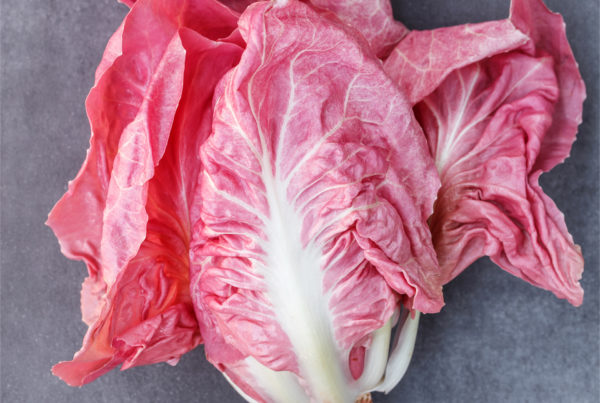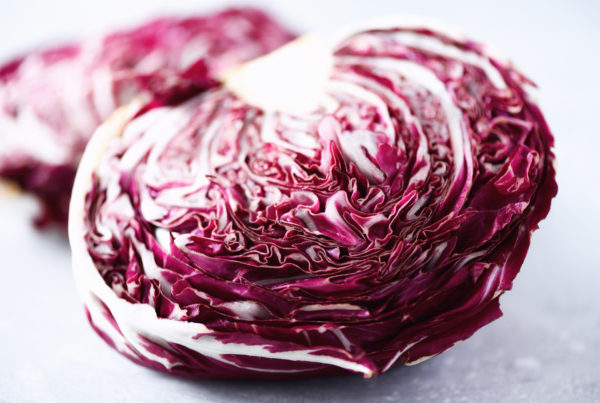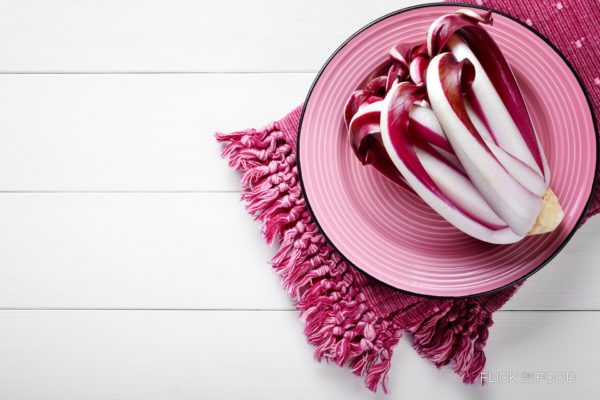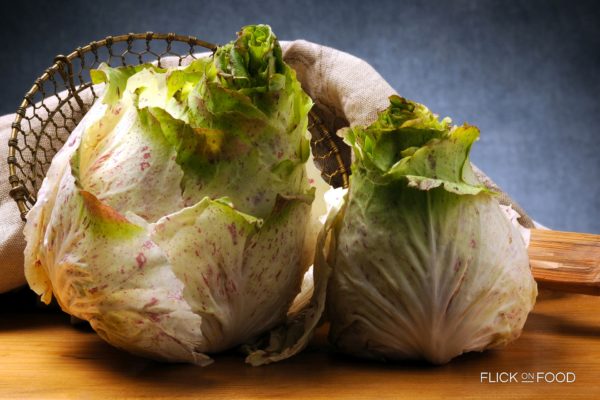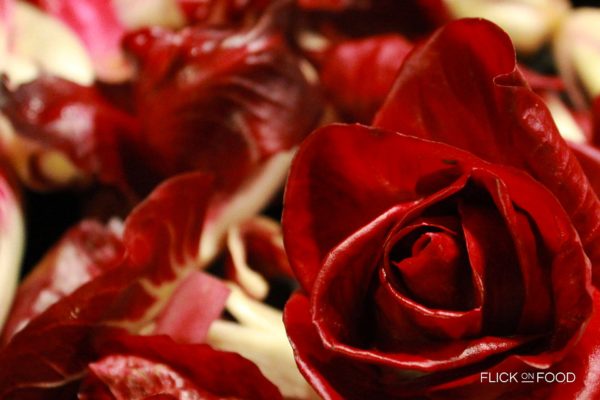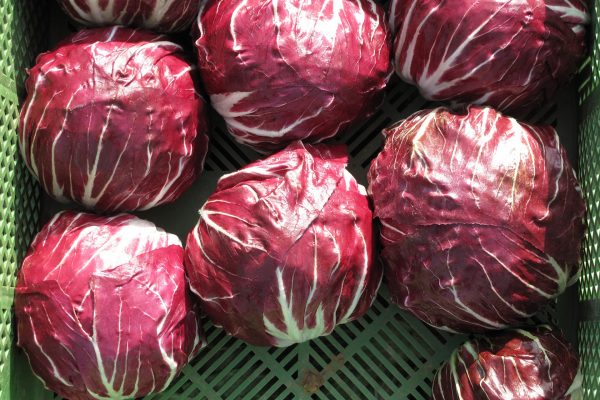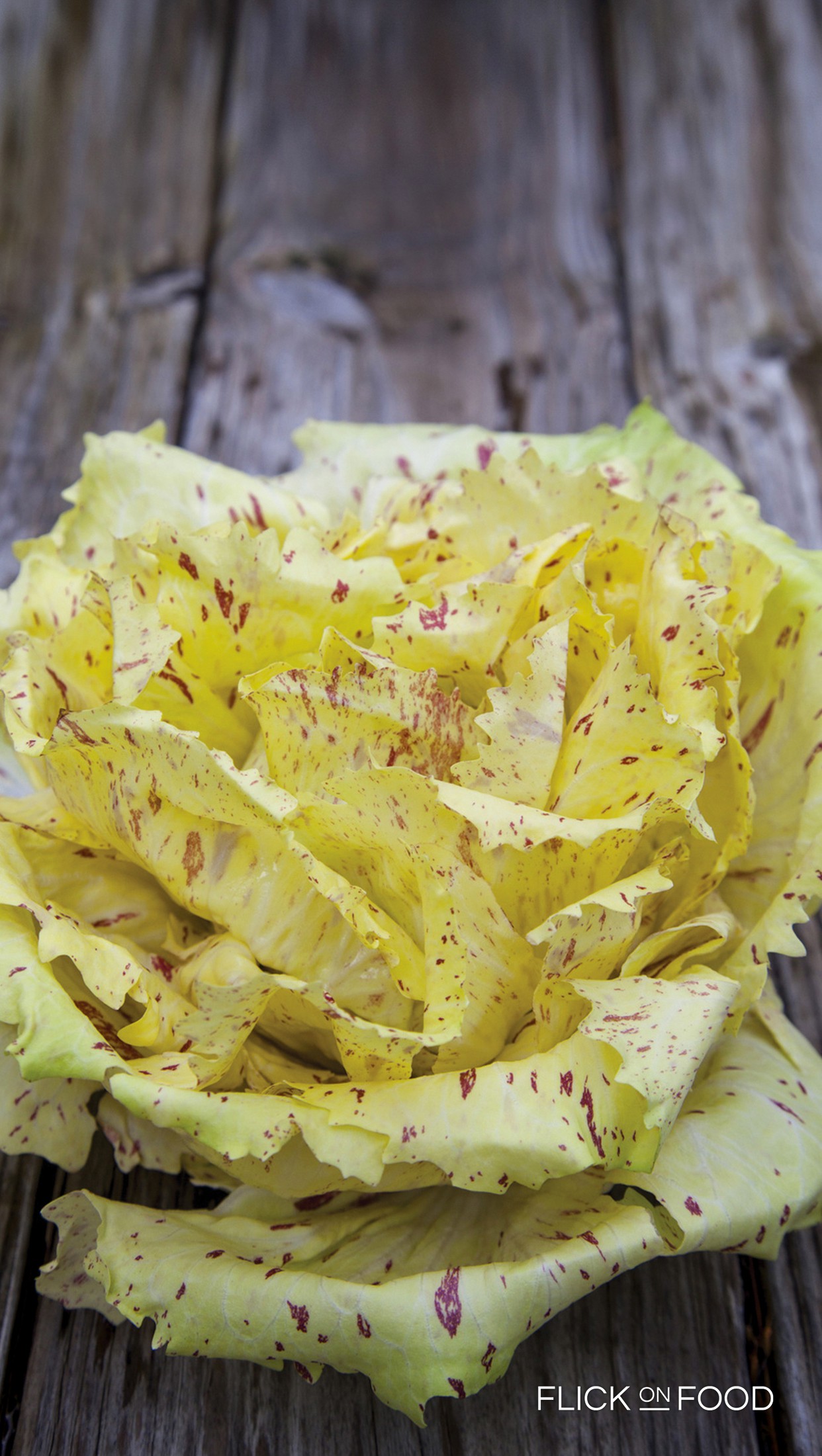
Don’t wet the leaves too much before cooking or they’ll lose their structure.
Origin
First appearing in Italy in the 16th century, fior di Maserà striped radicchio wasn’t well known until an exhibition in Treviso in the 1800s. This area is so well suited for radicchio cultivation that there’s even a sign on the road between Venice and Treviso proclaiming it “radicchio road.” In the evocative medieval town of Castelfranco in the province of Treviso, a special variety of striped or white radicchio arose. It was made possible by a technique called imbiancamento (whitening) developed by the local farmers in the early 1920s, which led to the creation of the ‘white flower of Maserà’. Known scientifically as Cichorium intybus of the composite family, it has evenly spaced stripes on all its leaves, ranging in colors from light purple to bright red. Planted in Maserà by more than 130 producers between 1 June and 15 August, they’re then picked on exactly the 20th of September.
Cookit
Striped (or white) radicchio looks a bit like an orchid, and is unlike other varieties. It’s one of the most sought after produce items thanks in large part to its versatility in the kitchen. It’s decidedly sweeter and more delicate than other more bitter chicory, and is exquisitely crisp. Some of the most popular ways to cook it include: oven roasted, risotto with radicchio and goat’s cheese, or timballo, a baked pasta dish made with radicchio, sausage and scamorza cheese. It is sweet but slightly bitter, and lends itself to bold, unique meals that ring in the colder season.
Did you know
How does the whitening process make radicchio resemble a white orchid? After the plants are uprooted with the entire root ball, the radicchio are placed in wooden boxes, bundled together, covered with a black plastic sheet, and left in the field for 3 or 4 days. Then they’re brought to a special storage place where they’re kept at 16-18° C with controlled humidity to bring out the white. This technique lets the Fior di Maserà leaves open up and change their color and shading.



